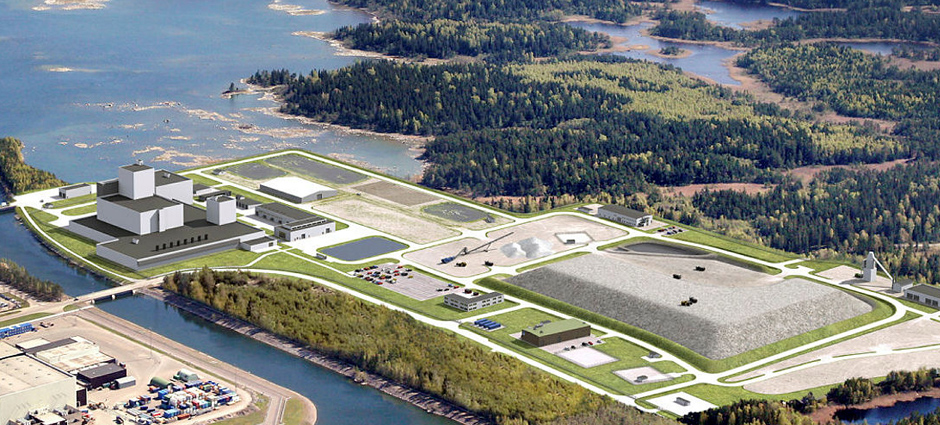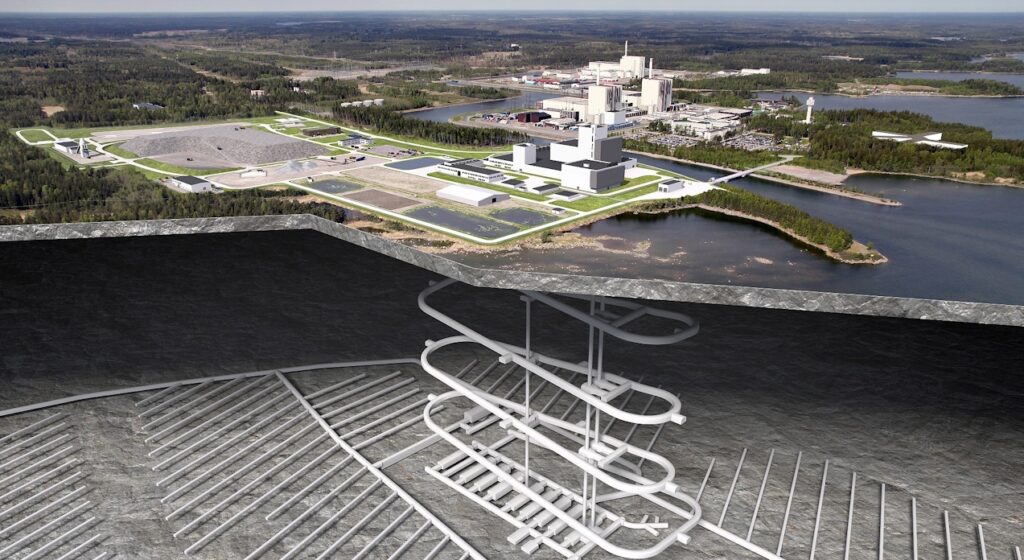The Spent Fuel Repository
Spent Fuel Repository is being built in 1.9 billion-year-old rock
The Spent Fuel Repository will be located in Söderviken, near the Forsmark nuclear power plant. The ground was broken in January 2025 and preparatory work above ground are well under way. At a depth of about 500 metres in the 1.9 billion-year-old rock, the underground section of the final repository will store around 12,000 tonnes of spent nuclear fuel.
Söderviken is in the Forsmark Industrial Estate and will be the location of the Spent Fuel Repository’s above-ground facilities. There are a number of buildings and a rock dump that will occupy a relatively small area. It is estimated to cover around 24 hectares, corresponding to about 44 football pitches.
From here, a ramp extending a total of five kilometres will be built down to a depth of about 500 metres. A system of tunnels will be created down in the bedrock. Fully extended – sometime in the 2080s – the repository will comprise over 60 kilometres of tunnels with space for more than 6,000 copper canisters of spent nuclear fuel. The underground space required for this is approximately four square kilometres.

Photo montage showing the surface facility of the planned Spent Fuel Repository in Söderviken near the Forsmark nuclear power plant. Illustration: Phosworks.
Ten years to build
Now that the ground has been broken, preparatory work above ground is now well under way. Forest clearance and ground preparation work have been completed, and preparations are now being made for the construction of a new bridge for canister transportation, as well as the creation of a rock dump and a water treatment plant. All of these projects will combine to ensure that Söderviken is ready when construction work starts on the underground facility in a couple of years.
The final repository will be ready for the disposal of nuclear fuel in the 2030s, and will be fully extended in the 2080s.
The construction of the repository is extraordinary in the field of nuclear safety. In terms of rock engineering, it involves extracting a total of around 2.7 million cubic metres of rock over several decades.
The disposal of copper canisters containing spent nuclear fuel will take place down in the repository, using specially built machines that can be controlled remotely with great precision. But if something unforeseen happens, it must be possible for operators to carry out repairs on the machines in situ.

Photo montage of the Spent Fuel Repository in Söderviken in Forsmark, above and below ground viewed from the south-east. Photograph: Lasse Modin.
Mapping continues
The excavation of new tunnels will take place in parallel with the process of disposal commencing in the completed tunnels. This work will continue for around 40 years, until all nuclear fuel has been disposed of. The repository will then be sealed. Throughout the entire operational period, geologists will continue their work to map the rock and plan new tunnels.
Around one hundred people are expected to be involved during the first year of construction work. The number of people involved will gradually increase, and during the final, most intensive phase of construction, there will be 300-400 people on site.
Last review: June 17, 2025
The Spent Fuel Repository in Numbers
- The repository will be located at a depth of approximately 500 meters in bedrock that is 1.9 billion years old.
- It is planned to hold around 12,000 tonnes of spent nuclear fuel in 6,000 copper canisters.
- The surface facility will cover an area of 24 hectares – equivalent to 44 football fields.
- Once fully developed, the repository will include more than 60 kilometers of tunnels.
- The total volume of excavated rock will equal 4.5 Avicii Arenas (Globen).
Last review: June 17, 2025